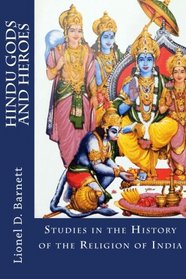Search -
Hindu Gods And Heroes: Studies in the History of the Religion of India
Hindu Gods And Heroes Studies in the History of the Religion of India
Author:
?Who are the gods to whom these priests offer their prayers and psalms? They are many, and of various kinds. Most of them are taken from the religion of the people, and dressed in new garb according to the imagination of the priest; and a few are priestly inventions altogether. There is Dyaush? pit?, the Sky-father, with Pithiv? M?t?, the Earth-... more »
Author:
?Who are the gods to whom these priests offer their prayers and psalms? They are many, and of various kinds. Most of them are taken from the religion of the people, and dressed in new garb according to the imagination of the priest; and a few are priestly inventions altogether. There is Dyaush? pit?, the Sky-father, with Pithiv? M?t?, the Earth-... more »
ISBN-13: 9781516807420
ISBN-10: 1516807421
Publication Date: 8/8/2015
Pages: 92
Rating: ?
ISBN-10: 1516807421
Publication Date: 8/8/2015
Pages: 92
Rating: ?
0 stars, based on 0 rating
Publisher: CreateSpace Independent Publishing Platform
Book Type: Paperback
Other Versions: Hardcover
Members Wishing: 0
Reviews: Amazon | Write a Review
Book Type: Paperback
Other Versions: Hardcover
Members Wishing: 0
Reviews: Amazon | Write a Review
Genres:




